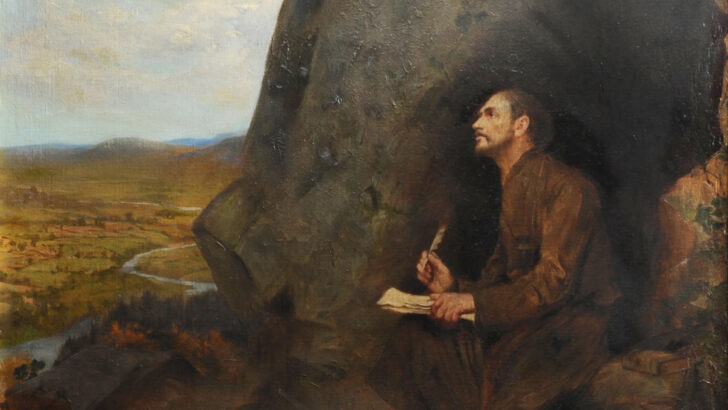Ignatius Loyola Christian Mystic, by Brian O’Leary (Messenger Books €19.95/ £18.95)
Ignatius and his Spiritual Exercises have been explored by readers since they were written, and have proved over the centuries to be immensely influential. The idea of ‘composition of place’ can even be traced, so I believe, in the earliest impulses to write in the case of many writers, but especially James Joyce. But this book suggests there is far more to Ignatius than that.
He has not been seen in the past as a mystic in the ordinary understanding of the term. Indeed Brian O’Leary in sitting down to write his own book tells us that there is only one other on the same theme.
“Only one English-language work comes to mind. In 1987 the North American theologian Harvey Egan SJ, published Ignatius Loyola the Mystic as volume five in the series ‘The Ways of the Christian Mystics’.”
This is of great value, he adds, especially because of Egan’s deep knowledge and understanding of Karl Rahner.
But O’Leary intends his book not for a well-informed reader deeply imbued already with the literature of mysticism, but for a wide general readership (which ought to be, in every case, the ultimate audience that a scholar sees for his work).
Important to an understanding of O’Leary’s work and to an understanding of what Ignatius thought and felt is the seventh and final chapter of this book, “As Seen by His Critics; Melchor Cano and the Inquisition”, which is quite absorbing.
After his return from Jerusalem in 1523 the opinions of Ignatius brought him to the attention of the Spanish Inquisition. His especial critic was a Dominican named Melchor Cano.
Dominican
The point seems to be that the Dominican believed that mystical experiences were only open to those in orders; they were a reserved activity. Ignatius felt that they were open to all.
Cano thought that seeking after the mystical enticed a person away from his true God-ordained station in life. This brings to mind the thought that David the shepherd boy was taken up from his humble worldly vocation to answer a very different call as an elected King. Sometimes we cannot at first discern the true vocation of an individual.
In the previous six chapters O’Leary explored the tradition of Christian mysticism, before turning to Loyola’s story of his own life, to the early mystical experiences at Loyola and later at Manresa.
He suggests that his readers will find it useful and insightful to read, alongside his own perhaps, Brendan Comerford’s earlier book The Pilgrim’s Story, in which the account of Ignatius’s life in the first part is separated conveniently from the discussion of the Spiritual Exercises in the second part. From there the reader can move almost in a natural sequence into what is explored in his own book.
Now those readers who are aroused by the thought of Ignatius as a mystic, will have to bear in mind that this book represents the initial stages of a multifaceted exploration which will go on over a long time. The great mystics of earlier times, say Catherine of Siena, Teresa of Ávila, John of the Cross, Hildegard of Bingen, loom over the landscape. So inevitably the first tentative efforts in this new field must take on the accumulated density of what has been written and debated about Ignatius’ predecessors.
But the book conveys something of the excitement the writer feels on having taken the first steps in what will undoubtedly be a long pilgrimage towards understanding. To share something of that feeling readers have only to ‘take up and read’ his pages. They are after all intended and crafted for a general readership.
At the heart of it is the fact that the aptitude for mystical experiences falls upon people in divergent and curious ways. Mystical experiences do not, in Ignatius’s view, depend on a special vocation only open to the clergy. They were an everyday experience, and that will be a strangely thrilling thought to many. A matter, indeed, as Teresa of Ávila remarked, of finding God among the pots and pans.
Of all the books that have poured from the presses in this Ignation year of celebration, Brian O’Leary’s may come to be seen (as least for the ordinary reader), one of the most interesting and important contributions of all.


 Peter Costello
Peter Costello St Ignatius as a spiritual pilgrim, a model for all ages.
St Ignatius as a spiritual pilgrim, a model for all ages. 